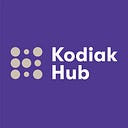4 Trends in the Supply Chain. Now and hereafter.
By Sam Jenks
Chuck Taylor Converse made a comeback, as did high waist jeans, and don’t forget this year of the man bun.
Trends, especially in fashion, come and go like a common cold. Sometimes they hit hard, nestle into our culture, and spread epidemic. Other times we’re over them in a week, or month’s time.
Just like in fashion, supply chain strategies experience trends too. Some of them stick around, and some of them don’t. One thing that is certain; 2016 was a big year for shifts, bends, twists and turns in the world of procurement, sourcing and supply chain functionality.
It’s absolutely impossible to gauge all of the shifts that have happened, and those that continuously occur, but we’ll try and highlight the trends we found most impactful to the business world.
Strap up your Chucks, tie back your man buns- it’s time to reflect;
4 biggest Supply Chain trends then, now and hereafter
1. Just a small town girl, living in a Digital world.
In a world where every 5 year old has a computerized tablet at their disposal, are you really shocked that supply chains are becoming more digitalized?
Digitalization of supply chain functionalities gives buyers and suppliers, alike, more agility in the decision making process.
The technological revolution, exhibited throughout the business world and common life, makes the understanding of a supply chains interworking more feasible for consumers. To the same degree, scaling and reaching new markets is available, because businesses are agile and able to employ comprehensive solutions. Technology has put businesses and consumers on a parallel.
Shifts towards the digitalization of supplier relationship management, sourcing, procurement and purchasing strategies has been slow but steady. Startups, and traditional consulting companies alike are popping up with their own adaptations of supply chain SaaS solutions daily (Robinson 2016).
2. We want answers and we want them now.
Transparency and traceability of the supply chain holds businesses (buyers and suppliers) accountable for the items they purchase, produce, source and the methods they practice to do so.
Initiatives for transparency and traceability begin with increased collaboration with networks of customers and stakeholders. Visibility is an increasing demand on goods and services from the common consumer, and procurement managers alike.
Buyers are becoming less likely to work with suppliers focused solely on product pricing. This has caused a shift towards a broader selection model, in which suppliers are selected based on aspects such as product quality, warranty and compliance with buyer’s codes of conduct (waset.org).
2016 has become the breeding grounds for the future of the empathetic consumer. We can expect to see this type of emotionally, knowledge driven consumerism for years to come.
Hence, the demand for traditional supplier relationship management has shifted towards software; utilizing big data to increase transparency for all parties involved.
3. Simply. Sustainable.
Kodiak Community blog has delved into sustainability and the movement of responsible consumerism in the past. Its prominence in present supply chain functionality is recognized, and continues to be a driving force of green business and CSR initiatives.
Consumers are insistent on knowing of sustainable initiatives from the companies in which they are purchasing goods. Businesses are expected to communicate their expectations and develop programs of sustainability implementation to satisfy the consumer crave (cips.org).
Meeting these expectations begins with furthering strategic and sustainable sourcing initiatives. Working with the right suppliers allows businesses to avoid any conflict of interest their customers might have about the supply chain processes.
An interesting statistic mentioned in our post about sustainability is one I feel compelled to mention again:
“According toThe Nielsen Company, 55% of online consumers in 60 surveyed countries polled that they would, in fact, be more willing to buy products or services from a company that is committed towards sustainability and social change.”
These efforts and concerns are especially pertinent to companies in the food and drink retail industry. We have reached a time in our lives where consumers are, now, more than ever concerned by the products going into their mouths.
4. Teamwork makes the Dream work.
As seen in the graphic above (SaaS Market Place graphic), there has been an overwhelming shift towards software integration into the everyday workings of supply chain strategies.
Companies are taking the plunge, recognizing that less is not always more. Trying to handle the complexities of the digital supply chain just isn’t possible alone. The daily monitoring, sharing and interpretation of analytics aids businesses, in ways, very seldom achieved without collaboration and integration. Big data is overwhelming and confusing, but with the help of external software, using the information to the benefit of your supply chain is possible.
3rd part applications, software and solutions will continue its growth and implementation into the business world day-by-day. Accepting that your company needs the help of an external application isn’t admitting defeat. On the contrary, partnerships and service relationships create an ecosystem of dynamic business practices, that we all must humbly accept, as the days of the calendar pass by.
Until next week.
— —
Kodiak Community Medium is a byproduct of Kodiak Rating a SRM SaaS Solution. I don’t intend to advertise, but merely bring about knowledge of our solution.
If you want to learn more abut the software services we offer, our website is www.kodiakrating.com
